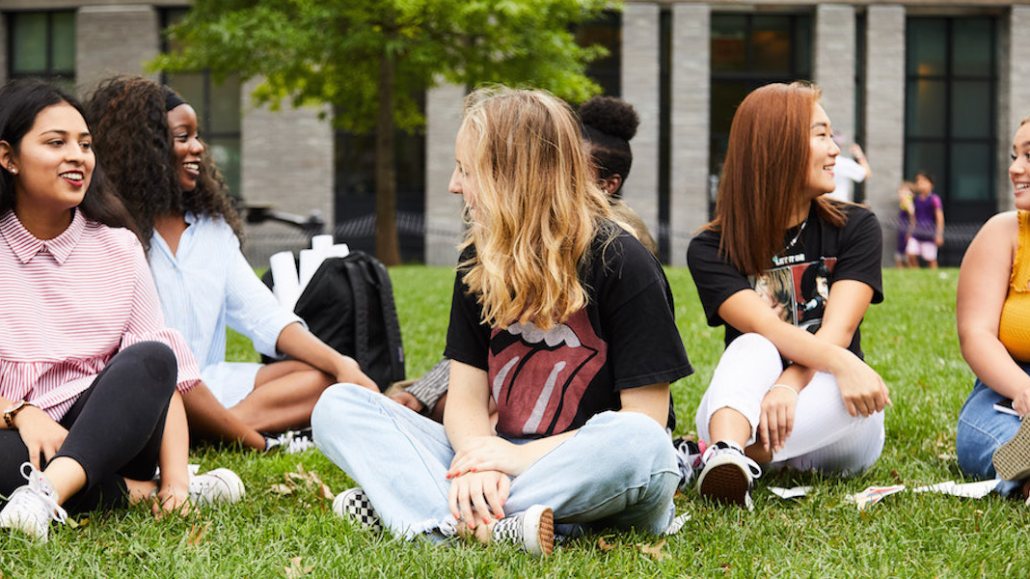Save 50% on a 3-month Digiday+ membership. Ends Dec 12.

CollegeFashionista is expanding today with the launch of a digital education platform and fellowship for its 5,000-plus members, college students known as Style Gurus. This group is made up of college students across 630 campuses who operate as digital interns in semester-long spurts, creating all of the sites content — a mix of outfit posts, beauty tips, campus updates and more.
After each semester, however, the students would move on and had little-to-no ties to the community or brand, said Katherine Power, the CEO and co-founder of parent company Clique Media Group.
Now, CollegeFashionista’s goal is to expand its offering and, effectively, keep this Gen-Z and millennial cohort in the “family.” “[We want to] create a pipeline for these influential females that will feed into other areas of our business, including our robust micro-influencer network, or as consumers of our older brands, like WhoWhatWear and Byrdie,” said Power. (The company currently reports a total audience reach of 6.2 million.)
Offering career training along more focused lines, from editorial to marketing, is one way they’ll work to do that, with courses like “Professional Communication in the Digital Space” and “Self-Branding: What Does it Mean and How To Do It.” The program will also include a series of 101 courses outlining the basics of Photoshop, HTML/CSS, YouTube and more. Some of those classes will include live video and the opportunity to video chat with teachers, many of whom will be Clique’s editorial and strategy leads themselves, as well as outside employees from companies like WGSN and the photo/videographer duo Kelia and Luca.
 CollegeFashionista’s relaunch imagery
CollegeFashionista’s relaunch imagery
“Our Gen-Z community is remarkably driven and hungry for experience. Many feel their universities are not properly equipped to dispense the real-life working skills they need for their first internships and jobs,” explained CollegeFashionista’s founder, Amy Levin. “We want to supplement their education to service this need, and ensure they feel confident and prepared when entering the job market.”
The program is free for all Style Gurus, who apply through a simple application on the CollegeFashionista website. The only criteria is that they’re enrolled in a university in the U.S. or internationally.
That website has also been relaunched with a cleaner, more sophisticated look — one that better echoes the other brands across Clique’s stable. It will continue to serve as a platform for the user-generated content that it’s known for. An exclusive job and internship board has also been added.
The fellowship program requires a more lengthy application process and is geared toward the website’s most prolific Style Gurus. Alongside their resume and portfolio, applicants are required to pitch ideas for social franchises, stories or events (depending on their interests), and to demonstrate their understanding of the CollegeFashionista brand.
To help these students dive deeper into their prospective career paths, CollegeFashionista offers them a personalized curriculum in one of five paths: editorial, photography, social media, graphic design or marketing/PR. When the program ends at the end of a semester, fellows will have a portfolio full of work to rely on when applying for jobs.
Clique has high hopes for the program, which will compete against similar (albeit paid) initiatives from the Business of Fashion and Mastered, as well as those online courses held by schools like Parsons and London College of Fashion. “When you see CollegeFashionista on a student’s resume, we want that to act as a certification badge,” said Power. “That line item has always indicated that they are great writers, but this educational program will now allow it to indicate that students are trained and prepared to excel in the fashion industry.”
Levin believes that keeping the program free and easy-access will be key to its success. “We wanted to make this platform as accessible and inclusive as possible,” she said. “Our hope is to democratize this educational experience.”
 CollegeFashionista’s relaunch imagery
CollegeFashionista’s relaunch imagery
The news marks the company’s largest initiative since being acquired by Clique Media Group last October for a reported seven figures. For two weeks starting in late June, the brand also set up a temporary co-working space, dubbed the CF Clubhouse, for its Style Gurus in New York. The NoLita space featured product and activations from sponsors like Sephora and American Eagle.
“Having CollegeFashionista in the Clique portfolio gives us access to a built-in group of online and offline influencers, which is incredibly valuable to us and to our brand partners,” said Power when asked about the acquisition. “As an editorially-led company centered around female communities, having the opportunity to nurture this next wave of content creators is important to us and the values we’ve set forth.” What’s more, she said, the Style Gurus have become a built-in Gen-Z test group, providing Clique with insights into a group that most brands and advertisers are eager to attract.
Levin, for her part, said joining the Clique family has allowed CollegeFashionista to scale much faster than would have originally been possible. Although her team is only seven members strong right now, they’ll be expanding in the coming year to help sustain their growth plans.
Photo Credits: Tory Rust
More in Media

Technology x humanity: A conversation with Dayforce’s Amy Capellanti-Wolf
Capellanti-Wolf shared insight on everything from navigating AI adoption and combating burnout to rethinking talent strategies.

How The Arena Group is rewriting its commercial playbook for the zero-click era
The company is testing AI-powered content recommendation models to keep readers moving through its network of sites and, in doing so, bump up revenue per session – its core performance metric.

Media Briefing: Why publishers are flocking to Substack
The Economist, The FT, The New Yorker and others have recently launched Substack newsletters, with varying strategies to find new audiences.









